
Ballast Water Management Technologies: A Comparison Between UV Based Systems & Electrochlorination Systems.
1 /
9Pages
Catalog excerpts
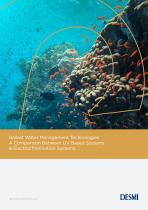
Ballast Water Management Technologies: A Comparison Between UV Based Systems & Electrochlorination Systems. PROVEN TECHNOLOGY
Open the catalog to page 1
Ballast Water Management Technologies: A Comparison Between UV based Systems & Electrochlorination Systems This white paper provides an overview of the two most prominent ballast water management (BWMS) technologies installed on today’s vessels-ultraviolet (UV)-based systems and electrochlorination (EC) systems. It offers a comparison between the two technologies and explores the benefits and challenges faced by their operators. In particular this white paper puts spotlight on the so far overlooked but potentially serious complications related to operating UV BWMS with different operating...
Open the catalog to page 2
Up until October 2019, close to 10,000 vessels— nearly 10% of the global vessel fleet—has been fitted with a ballast water management (BWM) system. According to Clarkson's World Fleet Register, the most common technologies for BWM are ultraviolet (UV)-based systems and electrochlorination (EC) systems. Figure 1 shows the different technologies installed on vessels. The IMO guidelines for type approval of BWM systems were revised in October 2018. Since the revision, the IMO now states that type approval according to the new BWM system code MEPC.300(72) (also referred to as the revised G8) is...
Open the catalog to page 3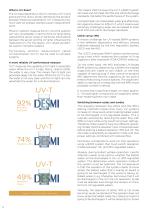
What is UV dose? The UV dose depends on the UV intensity (UV-I) and exposure time, and is simply defined as the product between these two parameters. UV-I measures how much light (or energy) reaches a given measurement point. Most UV systems measure the UV-I, but the systems can vary considerably in terms of the UV lamp being used and the sensor setup. In particular, the distance between the sensor and the UV lamp influences the measured UV-I. For this reason, UV-I values shouldn’t be used to compare systems. Fortunately, another measurement called UV-transmission (UV-T), can be used to...
Open the catalog to page 4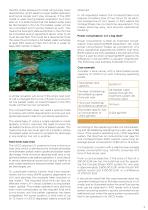
Table 1: Bulk Carrier Operating Profile the IMO mode, because US mode will typically mean reduced flow, which leads to longer ballast operation and hence longer port stay. However, if the IMO mode is used during ballast operation, but then later on it is determined that the ballast water shall be discharged in the US, the ballast water will be non-compliant and must be treated as such. This means the local port state authorities in the US must be contacted and an agreement about what to do must be reached. This could be a requirement that the vessel must conduct a full ballast water...
Open the catalog to page 5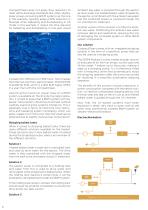
CompactClean does not apply flow reduction to meet USCG discharge standards. But other, slightly lower power-consuming BWM systems as the one in this example, typically apply a 50% reduction in flowrate when ballasting and de-ballasting in US mode. In this example, it means the time required for ballasting and de-ballasting in one year would Ambient sea water is pumped through the ejector as drive water. Pre-treated ballast water stripped by the ejector is combined with the ambient sea water and the combined stream is pumped through the UV chamber for treatment. Another version of this...
Open the catalog to page 6
Table 2: Neutralization chemical costs Electrochlorination systems offer cost-effective solutions on high ballast-flow vessels (i.e., flows above 1500 m3/h) with limited power availability. Electrochlorination describes the generation of hypochlorite from saltwater electrolysis. It can be divided into two main types: in-line (Figure 4), and side-stream (Figure 5). Both types of electrochlorination typically combine mechanical filtration with treatment with chlorine, which is produced by an electrolysis unit. For side-stream technologies, approximately 1-2% of total ballast water flows to...
Open the catalog to page 7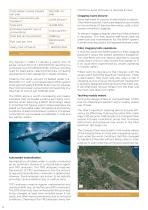
Table 3: Power consumption cost of fuel oil The figures in Table 3 indicate a yearly cost of power consumption of 1,400.00 EUR, resulting in a combined cost of 10,300.00 EUR, without including costs for spare parts, cleaning chemicals, or heating requirements when operating in colder climates. Treating the same amount of ballast water (i.e., 552,000 m3) with a CompactClean-1000 system costs approximately 8,300.00 EUR in fuel oil, whereas the minimum power consumption corresponds to a total fuel of cost of just 3,100.00 EUR. The OPEX alone is worth considering and clearly indicates that...
Open the catalog to page 8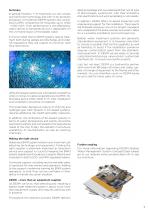
Summary In general filtration + UV-treatment is a very simple and well known technology, and with no by-products produced. UV-treatment BWM systems are considered CAPEX competitive for flowrates up to 1,000 - 1,500 m3/h. Their performance is not affected by water salinity or temperature, but is dependent on the UV-transmission of the ballast water. It is to be noted that UV BWM systems require treatment both during uptake and discharge, and under US regulations they are subject to minimum hold time restrictions. deep knowledge and we understand that not all type of technologies, systems...
Open the catalog to page 9All Desmi catalogs and brochures
-
SPATE PD 75
2 Pages
-
Ro-Fence
2 Pages
-
Globeboom
6 Pages
-
SMART Boom
2 Pages
-
CompactClean
20 Pages
-
DESMI FineFog™
8 Pages
-
ESL & ESLH
2 Pages
-
MARINE & OFFSHORE
20 Pages
-
NSLV & NSLH
4 Pages
-
TERMITE
2 Pages
-
TERMINATOR
2 Pages
-
TARANTULA
2 Pages
-
RO-BOOM Speed Sweep
2 Pages
-
RO-BOOM BEACH 800
2 Pages
-
RO-BOOM 3200
2 Pages
-
RO-BOOM 2200
2 Pages
-
RO-BOOM 2000
2 Pages
-
RO-BOOM 1800
2 Pages
-
RO-BOOM 1500
2 Pages
-
RO-BOOM 1300
2 Pages
-
RO-BOOM 1100
2 Pages
-
RO-BOOM 1000
2 Pages
-
RO-BOOM 650
2 Pages
-
POLLUTANK
2 Pages
-
POLLKITTEN
2 Pages
-
POLLCRAFT
2 Pages
-
POLLCAT
2 Pages
-
POLAR BEAR
2 Pages
-
OIL FENCE
2 Pages
-
HELIX SKIMMER
2 Pages
-
GLOBEBOOM'ED extra duty
2 Pages
-
GIANT OCTOPUS
2 Pages
-
DOP 250 DUAL
2 Pages
-
DOP 200 DUAL
2 Pages
-
DOP 160
2 Pages
-
DESMI BOOM
2 Pages
-
DBD 40 SKIMMER
2 Pages
-
DBD 20 SKIMMER
2 Pages
-
DBD 16 SKIMMER
2 Pages
-
DBD 13-4 SKIMMER
2 Pages
-
DBD 5 SKIMMER
2 Pages
-
DBD 2 SKIMMER
2 Pages
-
CS BOOM
4 Pages
-
ALLIGATOR
2 Pages
-
A-BOOM
2 Pages
-
ROTAN PD
2 Pages
-
ROTAN HD
2 Pages
-
ROTAN ED
2 Pages
-
ROTAN GP
2 Pages
-
ROTAN CD
2 Pages
-
How to identify a ROTAN pump
1 Pages
-
DESMI Priming Pump B114
2 Pages
-
DESMI Priming Ejector
2 Pages
-
Spare Parts Kits
2 Pages
-
Vertical Pumps DP
8 Pages
-
VAC
2 Pages
-
SA
2 Pages
-
PVLN
2 Pages
-
NSLV/H
4 Pages
-
NSL- Stainless Steal
4 Pages
-
NSL
4 Pages
-
NSA
1 Pages
-
Modular S
2 Pages
-
Modular H
1 Pages
-
ESL
2 Pages
-
DSL
2 Pages
-
DESLUBE
1 Pages
-
Fine-Fog (fire-fighting)
8 Pages
-
Cargo Pumps
8 Pages
-
Pumps For Free
2 Pages
-
OptiSave - Energy Saving System
20 Pages
-
OptiPower
8 Pages
-
Commissioning
4 Pages
-
AquaCulture
12 Pages
-
Automation Solutions
12 Pages
-
DESMI Scrubber Pumps
8 Pages
-
DESMI AfterSales
12 Pages
-
DESMI 48 - Fast Track
8 Pages
-
Engine Room Pumps
16 Pages
-
Marine & Offshore Pump Solutions
28 Pages
-
Marine
20 Pages
-
DESMI KaziCat
4 Pages
-
DESMI Landing Craft range
8 Pages
-
DESMI Grafter
4 Pages
-
Lease Hire Equipment
2 Pages
-
Industrial Skimmers
2 Pages
-
Workboats - New Generation
12 Pages
-
Oilfence
2 Pages
-
Offshore Vessel Solutions
2 Pages
-
Arctic Range
16 Pages
-
Speed-Sweep system
2 Pages
-
Oil Spill Response Equipment
40 Pages
-
DESMI Article Collection
56 Pages
-
Company Profile
24 Pages


















































































































